The Riverwest Filling Station is a Gas
A Riverwest gem with a long and storied past.
In 2012, when Bryan Atinsky bought a foreclosed restaurant building at 701 E. Keefe Ave. in Riverwest, he had three revenue streams in mind for his new venture. He would sell food and drinks, of course. There would also be beer to-go in 64-ounce growlers. Those sales would bring in additional money, and more quickly deplete the barrels. This is crucial, since draft beer deteriorates rapidly once the kegs are tapped, and the bar had a capacity of only 80. The plan would be for him to offer 30 beers on tap, many not readily available in local liquor stores. Atinsky got his growler idea in Athens, Georgia where he once lived. There, y’all could take some beer home in a growler.
Nice Idea – but Illegal
There was a problem with his business model, however. It was against the law. Unlike in its Deep South counterpart, here in beertown, (once known as “The German Athens”) only brewpubs could sell growlers. Class B Tavern license holders like Atinsky could not. Neither could breweries like Lakefront or even giant Miller. Ald. Nik Kovac got on the case and found that the anti-growler ordinance was outdated as to its intent and purpose. There had been no problems with the legal growler sales. The law was changed, benefiting the pioneering Atinsky, his thirsty customers and the industry in general. Today growlers can be filled at over a dozen places in the metropolitan area.
After considerable remodeling, and with the law now on his side, Atinsky opened The Riverwest Filling Station in January 2013. Seven years later, the family-friendly full-service restaurant (55% of sales) and bar (45% of sales) is doing fine, and the growlers stream out the door.
Was Meat Market and “Soft Drink Parlor”
Keefe Avenue was the northern city limits in 1910. Although blocks had been laid out, and the lands subdivided, residential development was still thin in the northern reaches of what is now Riverwest. The opening of the nearby 1.5 million-square-foot Seaman Body Co. plant in 1920 brought thousands of workers to the giant factory, and to the smaller ones that fed it parts and materials to build Nash motorcars. Many employees purchased homes in the neighborhood. Developers like John Balthes followed with commercial buildings, like this “Store and Flat” at what was then 61-Keefe Ave. for which a permit application was made on October 18th, 1922. The architect of the $11,000 building was Herman Esser (1864-1957), who was much active during his long career, with the 1905 Public Service Building, headquarters of the electric and streetcar utility being perhaps his most elaborate and sophisticated commission.
Unlike downtown or older areas of the city, no demolition was required to build this 29-foot by 52-foot brick structure with its 14-inch thick concrete basement walls. The 30-foot by 120-foot lot was “virgin dirt.” In a sign of the times, the building was equipped with a brick garage. According to the permit examiner, “Garage to have a pyro bar roof.” This was a lightweight product of the United States Gypsum Company, weighing 13 pounds per square foot, or about the same as a ham.
The building is on the southeast corner of what was Keefe Ave. and N. Pierce St., which has its northern terminus there. On the first floor was a meat market with a Keefe Ave. entrance, and a “Soft Drink Parlor” around the corner, on N. Pierce St. A large apartment was above, with bay windows overlooking the street.
In 1930 the North Star Grocery shared the building with Herman Streit‘s Soft Drink Parlor. George Suchoski owned the building, lived upstairs, and operated the parlor. On December 31st, 1931, O. J. Bessire took over the meat market, while the saloon fronted as an “Ice Cream Parlor.” Bessire didn’t last a year, and was replaced in December 1932 by Walter Jankewicz and Jos. Rymaszewski, purveyors of “Meats and Groceries.”
By January 1934 the Washington Bldg. & Loan Company owned the building, likely by foreclosure. Frank Hauke ran his Meat Market and Groceries, while the N. Pierce St. portion was now a legal tavern owned and operated by George Suchoski, who still lived upstairs.
By 1935 Casimir Piechura owned the building, and combined the stores, turning the whole works into a saloon and adding three refrigerator boxes for beer in the basement. (Back in 1932, he ran what is now Circle A as a Soft Drink Parlor.) His widow, Starsisturva (who sensibly went by Stella) took over in 1940, and continued until 1950 when it became Bill Cole‘s Tavern. Cole installed a Pabst sign. Back then you didn’t need 30 beer selections to run a neighborhood saloon — one was plenty. Gust Magestro owned the building, and built a shed-like porch above the garage, which remains. On October 28th, 1959 Hy Davidson opened “Hy’s.” His was to be a short run. But a star turn was on the way.
A Half Century as Albanese’s
Within fewer than forty years the building had seen a parade of uses and operators. Things were to change in October, 1961, when Sicilian immigrant Joseph Albanese moved in, converting the tavern into a restaurant. Albanese got his start in the business on N. Water St. in 1941, moving to 1900 W. St. Paul Ave. (now Sobelman’s Pub) in 1953, before opening here. He took out a permit to lower the ceiling, and removed a partition to enlarge the kitchen. While he was at it, he bricked up most of the windows, using glass block in some areas to admit light, yet obscuring to outsiders the identity of those inside. By 1963 the building sported a 3-foot by 5-foot illuminated sign reading “Albanese’s fine FOOD & DRINKS Pizza.” Reflecting culinary trends, later signs dropped the “Pizza” for “Spaghetti,” the primary pasta attraction of the early carbohydrate era.
To Sicilian-born restaurateurs of Milwaukee’s early pizza and spaghetti days, any place not on the island itself was considered Northern Italy, with a cuisine subject to pernicious French, Austrian and Swiss influences. Here was no place for rice, polenta, and cream sauces. You came to Joe Albanese’s for garlicky red sauce served atop spaghetti and meatballs. The dishes were prepared following the recipes his wife Frances brought from Sicily, served on tables covered with red checkered cloths, and you liked it.
Not all at Albanese’s went there for the food. For some it was a good place to grab an after-work drink with the girlfriend while the wife was at home cooking dinner. The restaurant closed in 2009, a victim of the poor economy, changing times and overextended third-generation operators.
The Tavern Today
Just as the Great Depression of the 1930s found this building in foreclosure, so did the Great Recession of the last decade. In February, 2012, Atinsky bought the property from Wells Fargo for $120,000 and commenced extensive exterior and interior renovations commissioned from Flux Design, a Riverwest firm that has built the interiors for over 100 Milwaukee bars and restaurants. Windows replaced brick and glass block on the facades. The suspended ceiling was removed, revealing a tin one above. Maple floors were likewise revealed, and the interior was transformed with an industrial-chic motif quite suited to the structure and its location on the fringe of a remnant manufacturing district. The corner entry was moved to the center of the building and equipped with a ramp for access. The exposed brick and block walls were decorated with local artworks, while suspended light fixtures illuminated the dining area.
The thirty tap lines now occupy the center of the bar; beneath the array, the cooler is decorated with stickers from local breweries and the local Riverwest 24 bicycle race, thus endowing the joint with street cred. An ingenious clock on the wall is in the form of a gear; a blackboard reading “Growler Fills Here” points you in the right direction for that crucial amenity. The bathrooms are labeled “M” and “W”. “M” features a special treat — an original lighted Albanese’s Restaurant & Lounge sign hangs there. A proclamation from Governor Tony Evers, dated April 14th, 2019, declares 4/14 to be “Milwaukee Day” throughout the State of Wisconsin. Some customers might look forward to when 4/20 gets its recognition as well. A shelf is loaded with children’s books, attesting to the family-friendly environment here. The tavern offers free wi fi and has “USB + Plug Ports under bar … also purse hooks!” as a sign reads. Between the bar, which is on the east wall, and the front window is a small area that serves as a stage for musicians, when you can drag them away from the bar.
On Wednesday, January 15th, The Riverwest Filling Station was the host as the Riverwest Brewery Syndicate released its Series #2: Dulce de Leche Stout, produced at Company Brewing, with the collaboration of fellow syndicate members Lakefront Brewery, Gathering Place Brewing Company and Black Husky Brewing. Seats in the dining room and at the bar were packed. The clientele consisted of neighbors (as is always the case in Riverwest) along with outsiders (as is increasingly more often the case in Riverwest.) They were there for the large selection of craft beers as well as for the chow, incorporating elements of Israeli cuisine into Milwaukee bar food in a nod to Atinsky’s dual citizenship. As befits a beer gastropub, the place was hopping.
In season, tables are set outside for dining and drinking. The transition from a meat market/corner tap to an appealing modern restaurant over the course of a century is yet another testament to the remarkable durability and adaptability of our splendid drinking infrastructure. No other city matches it, and no neighborhood does it better than Riverwest. As John McGivern said of the neighborhood, you either know it well, or not at all. You should know Riverwest Filling Station if you would care to know this resurgent neighborhood, its residents and its visitors.
Not Only Meat Market to Become “Meet Market”
The Riverwest Filling Station is not the only Milwaukee tavern to have started as a meat market. Others we have visited include Henry’s, located in the Downer Theater building on the East Side, and Bosco’s, also in Riverwest. … The tavern’s location at the intersection of N. Pierce St. and E. Keefe Ave. provides a good tutorial on the messes in this city’s addresses prior to 1930. Now all street names begin with a directional (N,S,E,W), once quite rare. “North Pierce St.” was an exception, distinguishing it from what is now W. Pierce St., located four-and-a-half miles to the south. (See “Why Does City Have Two Pierce Streets?” by my colleague Carl Baehr.) Parallel neighbors Booth and Fratney were simply that.
Keefe Ave. and other east-west streets in the neighborhood had numbering problems. The address numbers grew west from Humboldt — and also grew as they headed east, each beginning with a zero, which is simply absurd. Across the river, all address numbers ascended as they headed east. You wouldn’t know which way to turn! In an era of limited communications (mostly by mail) with a huge immigrant population uninformed as to the English language and the complexities of the city’s street nomenclature and numbering system, this posed a big enough of a problem (especially for the post office and taxi drivers) that the entire city was renumbered and its streets renamed.
On Tap - Sponsored by Lakefront Brewery
- Boulder Shake Chocolate Porter
- Church Street Holy Cow
- Karben4 NightCall
- Ale Asylum Ambergeddon
- Black Husky Deck Dog Summer Ale
- Blake's El Chavo Mango Habanero
- Central Waters Bourbon Barrel Barleywine
- Company Brewing Blue Dress Park
- Gathering Place Priere
- Jk's Farmhouse Rose’ Co Op 39
- Karben4 Fantasy Factory IPAKarben4 Fruit Punch Fantasy Factory
- Karben4 Lady Luck Irish Red
- Lagunitas Brown Shugga' 2018
- Lakefront Cacao Barrel Aged Dark Chocolate Stout
- Lakefront Rendezvous Ale
- Maplewood Fat Pug
- MobCraft Laughing Clown
- Oskar Blues Old Chub
- Potosi Inner Sanctum
- Potosi Northern Method Doppelbock
- Potosi Shot Tower Espresso
- Potosi Wee Stein Wit Belgian-Style Witbier
- Revolution Freedom Of Speach
- Revolution Hazy Hero
- Rush River Double Bubble IPA
- Saugatuck Peanut Butter Porter Nitro
- Terrapin Watermelon Gose`
- Three Floyds LazerSnake
- Ace Pineapple Cider
Photos
The Verdict
- Trade Name: The Riverwest Filling Station
- Location: 701 E. Keefe Ave., City of Milwaukee
- Neighborhood: Riverwest
- Subdivision: Florence Park; platted circa 1910
- Architect: Herman J. Esser
- Phone Number: (414) 906-9000
- Website: www.the-filling-station.com
- Facebook: https://www.facebook.com/TheRiverwestFillingStation/
- Twitter: None Found
- Description: A solid 1922 storefront building with an apartment above first served as a meat market, sharing space with a “Soft Drink Parlor,” then got legal as a tavern and ran for a half-century as an out-of-the-way Sicilian restaurant beginning with the early days of the Pizza craze. Since 2013 it has been The Riverwest Filling Station, the first off-premise location to legally sell growlers of beer to go in the city.
- Capacity: 80
- Year Established: As The Riverwest Filling Station, 2013; was Albanese’s from 1961-2009
- Year Building Constructed: Building permit issued October 18th, 1922; occupancy 1923
- Building Owner: Atinsky Property Management, LLC, Bryan Atinsky, Registered Agent
- Estimated Annual Rent: Could not be determined. Operator owns building
- Property Assessment: The 3,600 square foot lot is assessed at $8,300 ($2.30 per square foot) and the improvement is assessed at $153,400 for a total assessed valuation of $161,700. 2010 Assessment: $126,000
- Property taxes: $4,831.25 Current on the Installment Plan. First payment of $1,080.74 is due by January 31st, so get in there and drink!
- Business Owner: The Milwaukee Filling Station, Inc., Bryan A. Atinsky, Agent, 70% owner. DOB 07/21/1969
- Business: Restaurant, Tavern; 55% food, 45% alcohol sales
- Walk Score: 70 out of 100 “Very Walkable” Most errands can be accomplished on foot. City Average: 62 out of 100
- Transit Score: 50 out of 100. “Good Transit” Many transit options. City Average: 49 out of 100
- Aldermanic District: 3rd, Nik Kovac
- Police District: District 1
- Bike Racks: Right around the corner
- Wisconsin Architecture and History Inventory Record: Not Found
- Maps: 1894: Area was not surveyed; 1910 Map vol. 8 sheet 807
If you think stories like this are important, become a member of Urban Milwaukee and help support real, independent journalism. Plus you get some cool added benefits.
Bar Exam
-
Lakefront Brewery’s New Riverwalk Patio
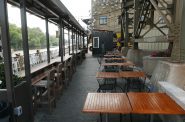 Jul 26th, 2023 by Michael Horne
Jul 26th, 2023 by Michael Horne
-
How Falcon Bowl Was Saved
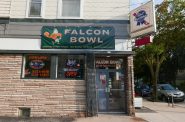 Jul 12th, 2023 by Michael Horne
Jul 12th, 2023 by Michael Horne
-
Clementines Evokes the New Bay View
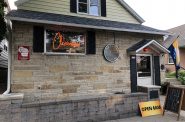 Sep 19th, 2022 by Michael Horne
Sep 19th, 2022 by Michael Horne


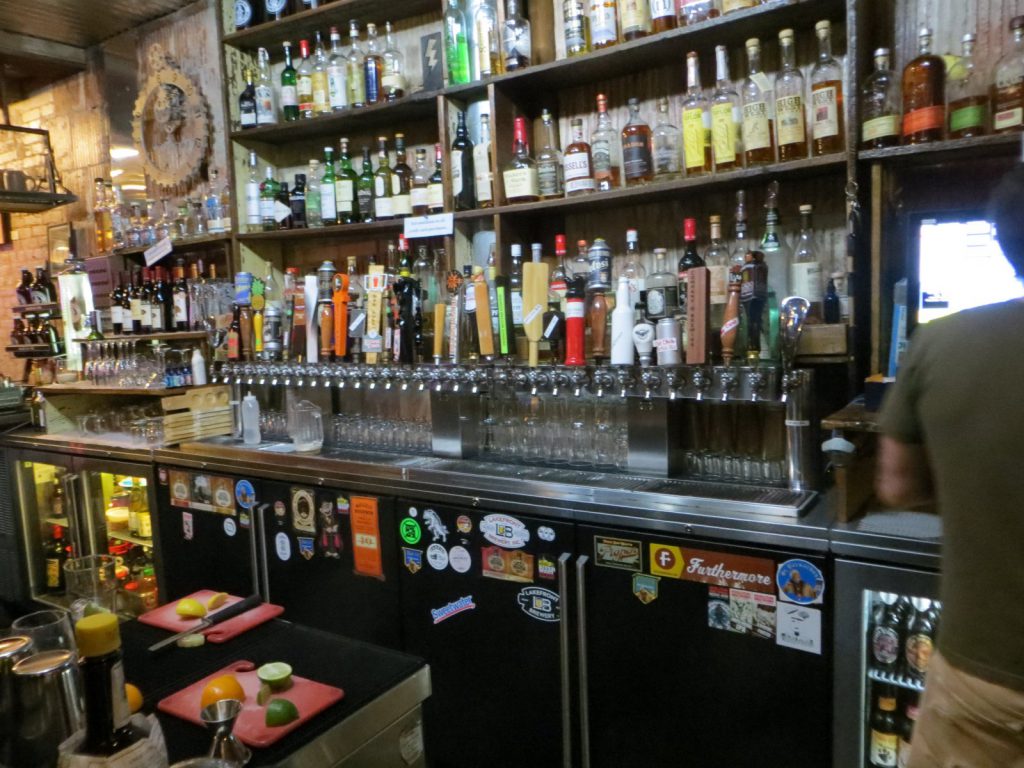
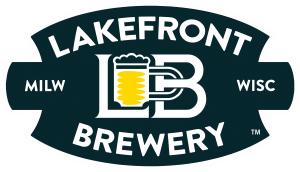
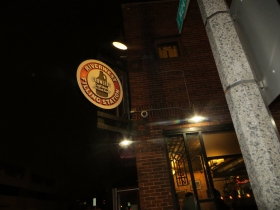
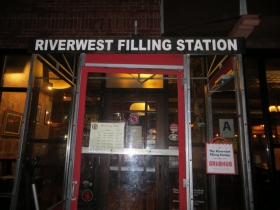
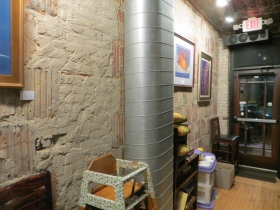
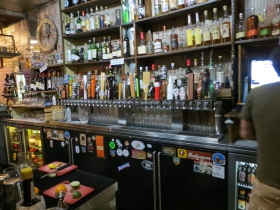



















Actually, the Riverwest Filling Station is in Milwaukee Police District 5.
I did not see the humor in the comment about the girlfriend and the wife.
I feel your pain, Janet. The girlfriend and the wife” remark was probably funnier in the early 60’s “Madmen” days than it is today. I also wonder about the source of the gag about having to drag the musicians from the bar. I have seen live, acoustic music there a # of times. I have not seen musicians dragged from the bar to perform.
The above caveats notwithstanding, I appreciated Horne’s historical and architectural story on a restaurant/bar that I like a lot.
The wait staff are especially personable at this establishment. The food and the drinks are very good there, too.